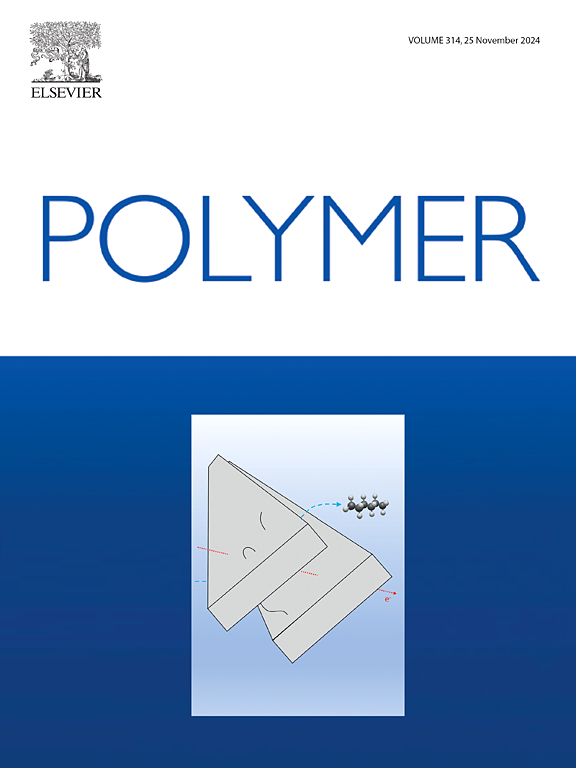Influence of anion and ionization ratio on CO2 sorption of poly(ionic liquid)s with imidazolium cations derived from polyepichlorohydrin: a multi-scale analysis
IF 4.1
2区 化学
Q2 POLYMER SCIENCE
引用次数: 0
Abstract
Aiming at developing new polymer absorbents for the physical CO2 capture, this work reports the synthesis and multi-scale characterization of two new families of poly(ionic liquid)s (PILs) obtained from polyepichlorohydrin (polyECH). PolyECH was quaternized with 1-methylimidazole quasi-quantitatively and the Cl anions were then exchanged by different salts to introduce BF4, AcO and TFSI anions for the first series of PILs. The second series was then obtained by varying the amount of 1-methylimidazole, leading to new PILs with TFSI anions and ionization ratios increasing from 0 to 94.6%. The chemical structure of the different PILs was characterized by different NMR techniques (1H, 13C, 2D 1H/13C HSQC, APT 13C). Their physical properties and morphology were investigated by DSC, rheology and SAXS/WAXS. The CO2 sorption properties were then assessed with a magnetic suspension balance (MSB) and discussed based on structure-morphology-properties relationships. The best CO2 sorption properties (159.3 mg CO2/g PIL at 10 bar and 35°C) were obtained with the PIL having TFSI anions and the highest ionization ratio (IR = 94.6%). The particularly high CO2 sorption of this PIL was related to its highest interchain d-spacing, inducing better accessibility to the CO2-philic ionic sites.

求助全文
约1分钟内获得全文
求助全文
来源期刊

Polymer
化学-高分子科学
CiteScore
7.90
自引率
8.70%
发文量
959
审稿时长
32 days
期刊介绍:
Polymer is an interdisciplinary journal dedicated to publishing innovative and significant advances in Polymer Physics, Chemistry and Technology. We welcome submissions on polymer hybrids, nanocomposites, characterisation and self-assembly. Polymer also publishes work on the technological application of polymers in energy and optoelectronics.
The main scope is covered but not limited to the following core areas:
Polymer Materials
Nanocomposites and hybrid nanomaterials
Polymer blends, films, fibres, networks and porous materials
Physical Characterization
Characterisation, modelling and simulation* of molecular and materials properties in bulk, solution, and thin films
Polymer Engineering
Advanced multiscale processing methods
Polymer Synthesis, Modification and Self-assembly
Including designer polymer architectures, mechanisms and kinetics, and supramolecular polymerization
Technological Applications
Polymers for energy generation and storage
Polymer membranes for separation technology
Polymers for opto- and microelectronics.
 求助内容:
求助内容: 应助结果提醒方式:
应助结果提醒方式:


